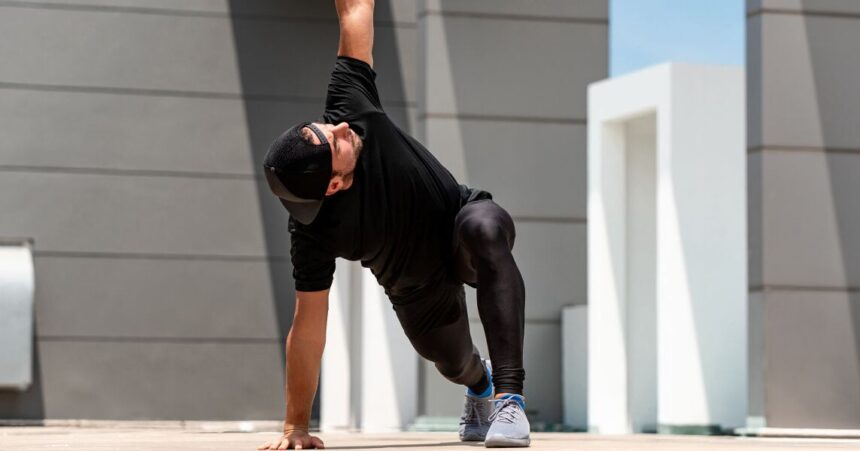It is essential to distinguish between mobility and flexibility to enhance one’s physical prowess and overall well-being. While the terms are readily synonymous, they respectively pertain to different domains of physical function. Flexibility involves the extent of movement at the joints or muscles. At the same time, mobility is the ease and speed at which an individual gets through the joint’s range of motion concerning flexibility and strength. Understanding these distinctions can have a significant impact on how you approach training and rehabilitation, allowing you to effectively improve your physical abilities.
Defining Flexibility and Its Role in Physical Health
The range of motion that a muscle or joint can attain is referred to as its flexibility. It is usually defined in terms of the extent to which a muscle can be stretched without causing pain or impairment. Stretching is an activity that assists in enhancing flexibility because it extends the muscles and tendons making it easier to avoid stiffness and to move more. In many of the field activities that demand large amounts of movements such as gymnastics, dancing, and even yoga, flexibility is key. Flexibility is the key aspect of muscles, and by stretching them, one is preparing muscles for harder exercises, thus avoiding regular injuries. Improved flexibility is closely followed by improved use of posture, reduced muscle soreness, and achievements in overall physical activity.
Exploring Mobility and Its Comprehensive Nature
Mobility is, therefore, slightly broader than flexibility because it also incorporates the ability to control and effectively move within the flexibility range. It entails the capacity to move fluidly and synchronously, guaranteeing that the nervous system, muscles, and joints function. Functional actions requiring both flexibility and strength, such as squatting, lunging, and reaching, depend on mobility. In contrast to flexibility, which can be enhanced just by stretching, mobility exercises often include weight training, coordination tasks, and stretching. Effective mobility training makes sure that your body can manage dynamic motions and different loads, which improves your total movement efficiency and lowers your risk of injury.
The Interplay Between Flexibility and Mobility
Both flexibility and mobility are terms that are used interchangeably, but they do not refer to the same thing. Mobility depends on flexibility because it helps muscles and joints to perform movements with ease. However, flexible muscles will not allow one to move properly; one must have sufficient required force and direction to use flexibility in practical activities. For instance, a flexible hamstring enables a large range of leg motion. Still, it may not translate into better performance or lower risk of injury without the strength and coordination to regulate that movement. A well-rounded strategy that includes stretching, strengthening exercises, and movement drills is required to maximize both flexibility and mobility. All these flexibility methods ensure that your body can only move with ease and effectively when it is performing several physical tasks.
Assessing the Impact of Training on Flexibility and Mobility
Training for the express purpose of improving mobility or flexibility has different objectives and methods. Static and dynamic stretching exercises that lengthen muscles and increase joint range of motion are often included in flexibility training programs. Mobility training, however, combines strength and control exercises like joint rotations, dynamic stretching, and functional motions with flexibility. Mobility training stresses the capacity to move across the whole range of motion with appropriate control and stability, while flexibility training concentrates on increasing the degree of muscle and joint stretch. To attain peak physical performance, a comprehensive fitness program should include both forms of training. For example, adding mobility exercises to your regimen can help with coordination problems, strength imbalances, and flexibility limits that impact the overall quality of your movements.
Integrating Flexibility and Mobility into Your Routine
Including mobility and flexibility in your workouts will guarantee whole-body growth and injury avoidance. Incorporating flexibility exercises, such as static stretches and yoga postures, can improve joint range of motion and muscle elongation. In addition, add mobility exercises that emphasize strength, coordination, and dynamic movements to make sure you can use your flexibility successfully in real-world scenarios. Exercises like lunges, squats, and rotating motions that work for numerous muscle groups and demand balance and control are common components of effective mobility training regimens. You can build a balanced approach to exercise that improves overall physical performance, lowers the chance of injury, and promotes long-term health and functioning by including both mobility and flexibility training into your routine.
Conclusion
Understanding and distinguishing between flexibility and mobility is critical for effective physical training and overall health. Mobility is the capacity to move within that range with strength and control; flexibility is the range of motion of muscles and joints. Including mobility and flexibility training in your workout regimen guarantees that you reach a holistic approach to physical health, performance enhancement, injury prevention, and general movement efficiency.









